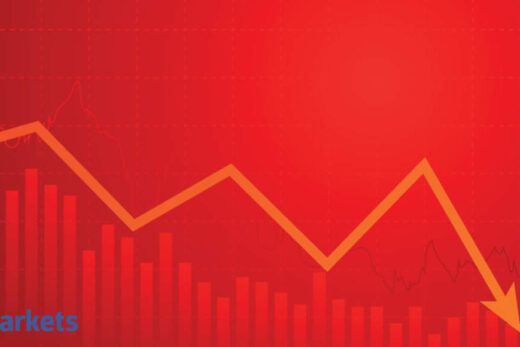They worry that the Fed’s rock-bottom interest rates and massive bond buying might lead to asset price bubbles, and excessive risk-taking and leverage that could come back to haunt the economy.
“We’re now at a point where I’m observing excesses and imbalances in financial markets,” Dallas Federal Reserve Bank President Robert Kaplan said on April 30. “I’m very attentive to that, and that’s why I do think at the earliest opportunity I think it will be appropriate for us to start talking about adjusting those purchases.”
 Bloomberg
BloombergPowell, for his part, has shown no inclination to pull back on the Fed’s support for the pandemic-damaged, yet recovering, U.S. economy. But he’s lately sounded a bit more wary about potential dangers to financial stability.
Investors will get further insight into Powell’s thinking when the Fed releases its semi-annual Financial Stability Report at 4 p.m. Washington time on Thursday. The report is a product of the Fed board in Washington and won’t reflect the views of regional central bank presidents like Kaplan.
After avoiding calling asset prices elevated earlier this year, Powell surprised investors by using the “f” word to describe the markets when speaking to reporters on April 28.
‘Bit frothy’
“You are seeing things in the capital markets that are a bit frothy,” he said, after a two-day meeting at which the Fed opted to maintain its ultra-accommodative monetary posture. “Some of the asset prices are high.”
But he argued that a growing number of vaccinations and a faster economic reopening were the main forces driving prices higher, not Fed policy.
Powell also pointed out that some of the other factors the Fed looks at to assess financial stability risks are not flashing red. Household balance sheets are in good shape, leverage in the financial system is not high and banks are well-capitalized.
“The overall financial stability picture is mixed but on balance, it’s manageable,” he said.
Powell is far from alone in sounding wary about exuberance in financial markets.
“Asset bubbles are a hot topic these days for the somewhat obvious reasons that so many markets are on fire,” JPMorgan Chase & Co. Head of Cross-Asset Fundamental Strategy John Normand said in an April 30 note.
Financial conditions
The Fed chief faces a quandary when it comes to the markets. He wants financial conditions to be easy to help the economy and the jobs market recover from the devastation of the pandemic.
But he’s also aware that bursting asset bubbles can lead to economic recessions, as occurred in 2001 when high-flying technology company shares crashed, and in 2007 when housing prices crumbled.
To help limit the financial fallout from an eventual step-back in Fed support, former Bank for International Settlements Economic Advisor Stephen Cecchetti said policy makers should give investors a clearer idea of how they will adjust bond purchases in response to different economic scenarios.
The central bank is currently buying $120 billion of assets per month and has pledged to keep up that pace “until substantial further progress” has been made toward its goals of maximum employment and 2% average inflation.
Communicating shift
Powell has repeatedly declined to be more specific, except to say that it will likely be some time before such progress is achieved.
He has though promised to give investors ample warning of a coming shift in the Fed’s plans.
That might not be enough to prevent a swoon in a stock market that’s become dependent on the Fed’s largesse.
“Speculative markets are tricky,” former Fed Governor Jeremy Stein said. “They’re hard to manage.”
That could be especially the case if investors become fixated on the risk of faster inflation.
“There’s been some dry kindling for a while (for a steep market decline) but now you can imagine what a spark might be,” Harvard University professor Stein added.
More resilient
Former Bank of England policy maker Adam Posen said the Fed and other regulators should act to make the financial system more resilient and thus better able to handle an eventual increase in interest rates.
“There are things they can do now to reduce the likelihood that bad things will happen when they’re forced to raise rates in early 2023,” sooner than they’re currently expecting, said Posen, who’s now president of the Peterson Institute for International Economics in Washington.
Kaplan is not the only Fed president who has flagged possible financial risks. Boston’s Eric Rosengren has as well.
But unlike Kaplan, he has said it’s premature to talk about tapering bond purchases, though he’s added that it’s “quite possible” that the conditions for scaling back buying might be met toward the end of this year.
While asset prices are not yet “unusually buoyant,” Rosengren suggested on a webinar on Wednesday that the Fed’s very patient approach to reducing stimulus could result in them becoming so.
“If we get down to full employment by the end of next year with interest rates still quite low, I am going to be highly attuned to what’s happening in financial markets,” he said.



